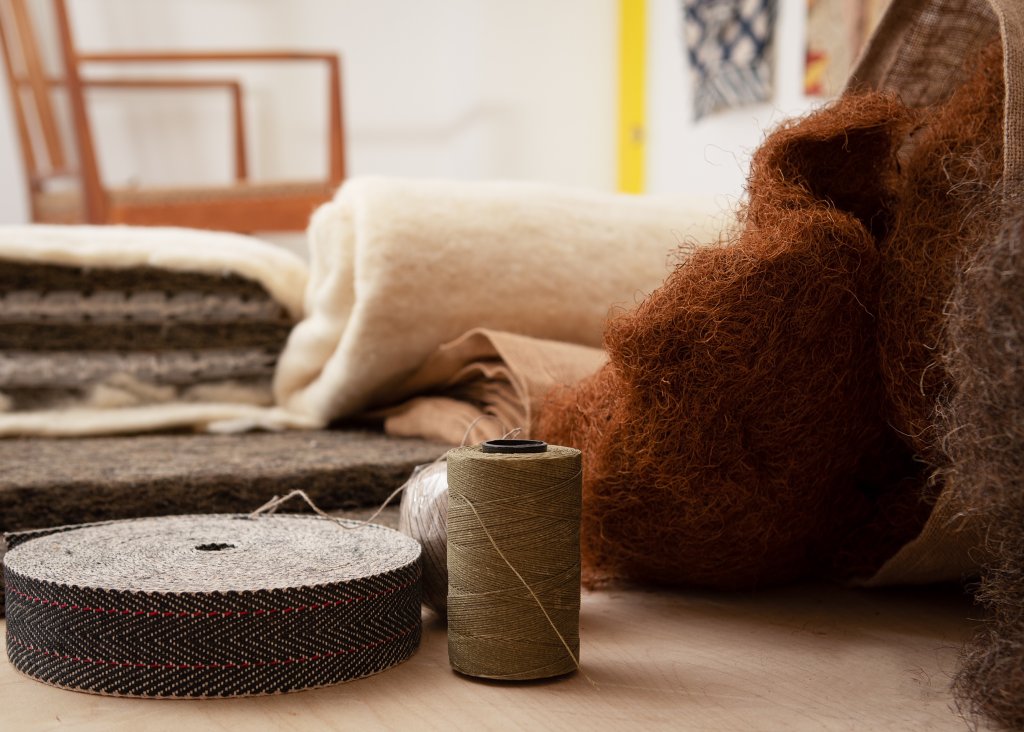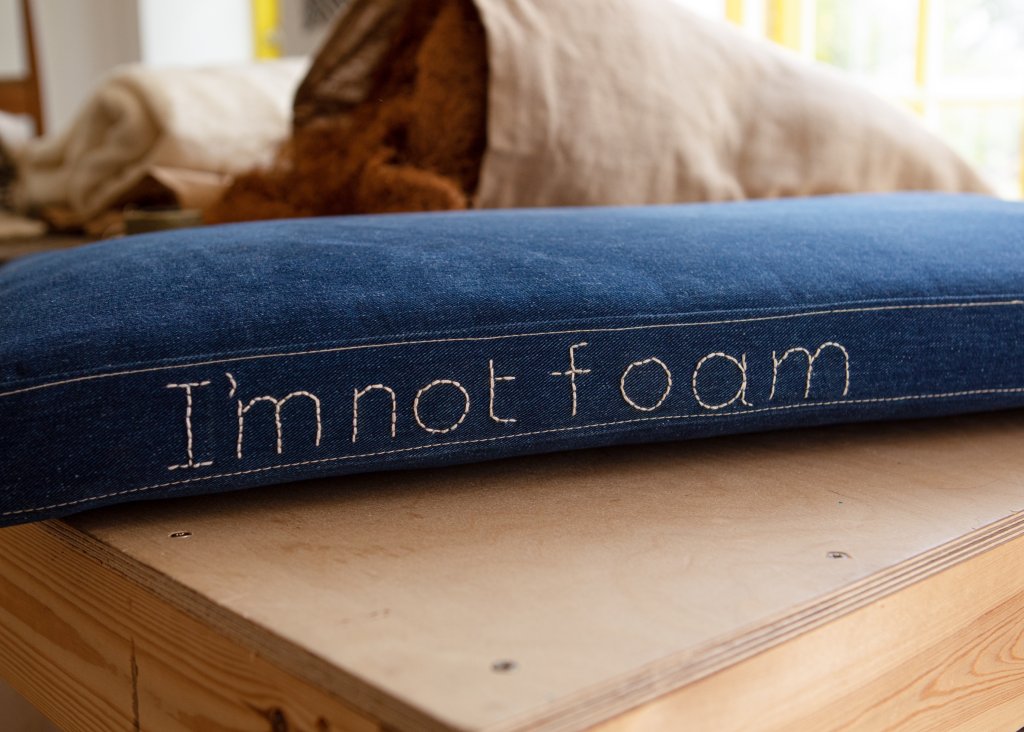An unexpected clean air culprit in your home
BlogWritten by
Delyth Fetherston-Dilke, Upholsterer at Delyth Upholstery

Sofas in the UK are packed full of fire retardant chemicals (FR), but these chemicals don’t stay put and there is serious doubt that they offer fire safety
Chemicals puffing out of sofas into indoor air
So how is this relevant to clean air in the UK? Each time you sit on an upholstered chair or sofa your not so soft descent acts as a bellows puffing the FR chemicals out into the air. These FR chemicals are additives rather than chemically bonded with the foam or fabric and as such they release into our home and office environments. The FR chemicals float through the air, partition into dust, permeate our skin, are ingested, and enter our lungs as we breathe.
These FR chemicals join the list of chemical pollutants in the air of our homes that adversely affect our health and most adversely affect the health of our children. FR chemicals have been found to be carcinogenic, neurotoxic and can disrupt our hormone systems. They are the unexpected clean air culprit inside our homes. Air pollution represents a serious global problem for human health and the environment. Could a change in our practice of treating our furniture with FR chemicals be a quick fix to a part of this problem?

Due to compliance with an out of date UK law
So why do we use FR chemicals in furniture? The answer: to comply with an out of date UK law. The 1988 Furniture and Fire Safety Regulations in the UK stipulate that furniture shall pass an “open flame test”. This test is in practice met by the majority of top fabrics and all foam being treated with FR chemicals. But the scientists increasingly doubt that this is offering effective fire safety and in fire situation the FR chemicals exacerbate the production of toxic smoke.
Not happening in Europe
I keep referring to the UK. Many people have asked if this stringent “open flame” fire test was driven by the European Union. Quite the contrary. There is no country in Europe, other than the UK, that has this open flame test.
Not happening in the US
Well how about the US? Do they have this open flame test? No they do not. In 2013, due to concerns about the harm to health of FRs and the lack of their fire safety benefit, the open flame test in California was replaced with a smoulder test. The smoulder test can be met without the use of FR chemicals. In 2021 this smoulder test was adopted as a national standard across the US. This change in the law had the support of the US furniture associations, foam producers, fire scientists, health care professionals and fire fighters. BIFMA (Business and Institutional Furniture Manufacturers Association) in the US, put the case succinctly:
“Given the increasing body of evidence that indicates the persistence, bio accumulation and known health concerns of many flame retardants, we believe the risks associated with the use of these chemicals is greater than the fire risk from furniture without flame retardants. Studies have shown that added flame retardants may have little impact on the flammability of furniture and are likely to increase smoke toxicity during a fire. “
But do we pride ourself on our fire death statistics in the UK? Yes we do, but wrongly so, for all these tonnes of FR chemicals, our fire death statistics are falling at the same rate as the rest of Europe.
An alternative fire safety standard – the smoulder test
Is there a way for the UK Government to legislate for fire safety without the use of chemicals? Yes. Change the fire safety legislation from an “open flame” standard to a “smoulder” standard. The smoulder test used in the US checks that the top fabric of a sofa can resist igniting even when a cigarette sits on the fabric for 45 minutes. This better reflects real life fire risk where the majority of furniture fires start with a smouldering source. This also better reflects the changes in our way of life since 1988. Smoke alarm ownership has increased from 8% to 91%. Smoking has dropped from 31% of adults to 13% of adults. The smoking ban in indoor public spaces has lead to 80% of adults choosing not to permit smoking indoors. The statistics surrounding furniture fire deaths, smoking and behaviour need to be further analysed to look at other practical solutions to minimise fire deaths. The highest fire death rate is amongst the elderly living alone. Are there practical solutions such as smoke alarms directly linked to fire stations for these more vulnerable groups?
Could the smoulder test give longer lasting fire protection?
There are other potential benefits of the smoulder test over the open flame test. The smoulder test is met by either using a naturally fire retardant fabric such as wool, or tightening the fabric weave and increasing the weight of a fabric. Alternatively a non-chemical interliner layer can be added. Logic would suggest that these measures might preserve the smoulder resistance of that top fabric over time. This is a study that would be worthwhile undertaking. Meanwhile many studies exist evidencing that the fire retardant chemicals used to meet the open flame test gradually release into the environment and into our air over time. Logically there will be a point in the sofa lifespan where it ceases to pass the “open flame’ test, as the FR chemicals have diminished. This too is a study worth undertaking. Are we polluting ourselves, our air and our environment all for an open flame test that not only doesn’t work, but actively prejudices against the elderly and the economically disadvantaged. For it is these more vulnerable groups left with the furniture from the 1990s.

These FR chemicals persist in our environment
Air pollution studies evidence these FR chemicals are present in the air and dust of our homes. Studies show these FR chemicals in our bodies and in our children. Environmental studies evidence these FR chemicals are persistent in our world, from gannets in Scotland to penguins in the Antarctic.
It is an anomaly that we in the UK are treating our furniture with toxic chemicals due to an out of date law. It is an atrocity our children are suffering lowering IQs due to the neurotoxicity of these FR air pollutants. It is unacceptable that we have let this regulation fester as “under review” for more than twelve years now in the UK when the government has researched and acknowledged the severity of the problem.
Let us design and innovate for fire safety
There is no place for toxic chemicals in our furniture. Give our industry the chance to design and innovate for fire safety. Design and innovate for a new stuffing material that does not form cyanide gas as it burns. Design and innovate tighter weave fabrics that repel a smouldering cigarette. I was asked why as an upholsterer (and former lawyer) I became interested in this subject and the answer is that I cannot bare the unfairness. I am not aware that a safe base line has been mandated for FR levels in our bodies and I am not aware of a study that assesses the exposure to FRs that we as upholsterers face. We strip down furniture day in day out where we have to literally pour out the dust from degraded foam. That dust is thick with chemicals. Unlabelled, unknown, some now banned as persistent organic pollutants, others that should be banned but the chemical review process takes years. We have no union to speak out for us, no epidemiologist assessment of the illnesses we may have suffered. It is not right, not fair and not just.

Speak with one voice
Many voices speaking together speak with power. The key industry players need to join with the firefighters, with the scientists, with the clinicians, with the cancer charities, with the asthma charities and with the environmentalists. This anomaly of an “open flame” rather than a smoulder test needs to be addressed.
Delyth Fetherston-Dilke
Upholsterer
delythupholstery@gmail.com